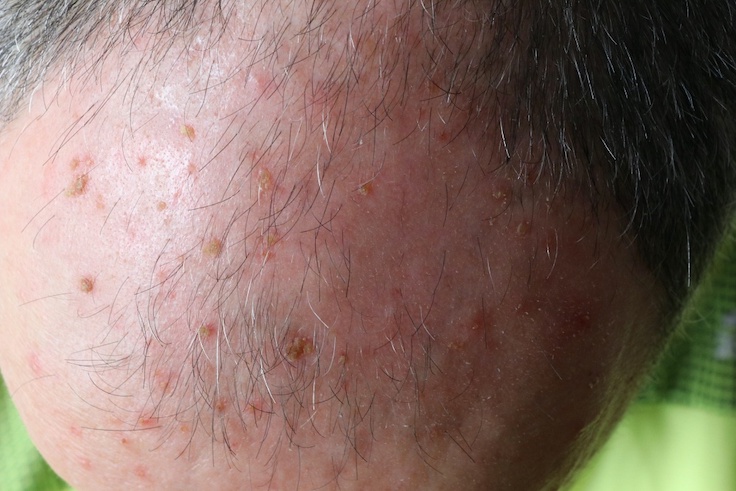Actinic Keratosis

This precancerous lesion typically appears on sun-exposed areas such as the face, lips and the back of the hands.
Actinic keratosis, or solar keratosis, is one or more rough, scaly patches of skin that develop after chronic sun exposure. The spot or spots may begin very small, but will grow over time with no other signs or symptoms.
While it may not seem like much to worry about, actinic keratosis can develop into skin cancer and should be treated by a dermatologist. If left untreated, up to ten percent of AKs develop into squamous cell carcinoma (SCC), the second most common form of skin cancer. In rarer instances, AKs may also turn into basal cell carcinomas, the most common form of skin cancer.
Causes
AKs are caused by years of ultraviolet ray (UV) exposure from the sun exposure from the sun or indoor tanning beds.
Symptoms
A single AK may range from the size of a pinhead to larger than a quarter. Most AKs are dry, scaly and rough textured but not all AKs look alike. Some are skin colored and may be easier to feel than see. These AKs often feel like sandpaper. Other AKs can appear as red bumps, thick red scaly patches or growths, or crusted growths varying in color from red to brown to yellowish black.
Sometimes an AK grows rapidly upward, and you see a growth that resembles the horn of an animal. When this happens, the AL is called a “cutaneous horn.” Horns vary in size from that of a pinhead to a pencil eraser. Some horns grow straight, others curve.
AKs often seem to disappear for weeks or months and then return. This makes treatment important. Left untreated, the damaged cells continue to grow and skin cancer may develop.
When AKs develop, they tend to appear on skin that receives the most sun, including:
- Forehead, neck, chest, ears
- Scalp, especially a bald scalp
- Arms or hands
- Lower legs, especially in women
- Border of the lip
Treatments
AKs are diagnosed on physical exam of the skin but some may require a biopsy if they do not have the classic appearance.
Among the most common treatments are:
- Topical medications
- Photodynamic therapy
- Excision or scraping

